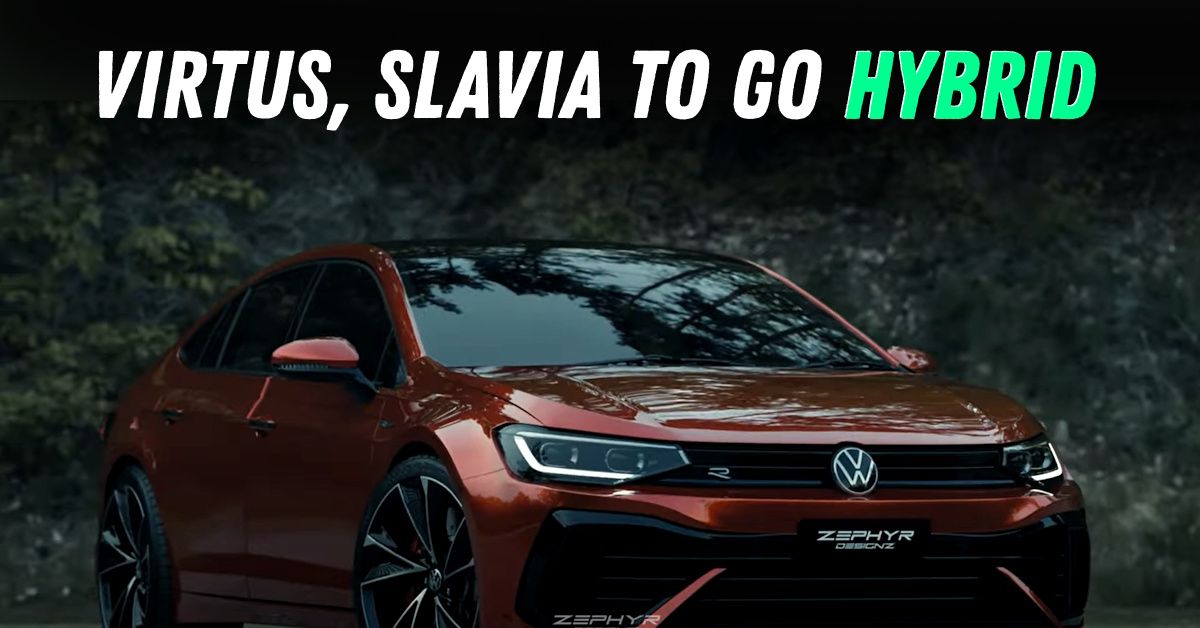Hybrid Volkswagen Virtus, Taigun, Skoda Slavia, Kushaq In The Works


Volkswagen and Skoda are preparing to take a significant leap forward in India with the next generation of their popular models – the Virtus, Taigun, Kushaq, and Slavia. These upcoming versions are set to embrace hybrid technology, offering a cleaner, more efficient driving experience without fully shifting to electric. The move is in line with growing interest in electrified vehicles and marks a key step in both brands’ long-term strategies for the Indian market.
The next-generation versions of these models are expected to be built on the updated MQB A0 37 platform – a more versatile and modern architecture compared to the current setup – that will underpin the next-gen T-Roc in international markets. One of the key highlights will be the addition of hybrid powertrains. Buyers can expect options like mild-hybrid (48V), strong hybrid (HEV), and potentially even plug-in hybrid (PHEV) systems. Under the hood, the new models will likely feature Volkswagen’s updated 1.5-litre TSI Evo2 engine. This engine is designed with hybrid integration in mind, delivering a blend of strong performance and improved fuel efficiency. For daily driving, this should translate into smoother power delivery, better mileage, and lower emissions – something many car buyers are beginning to prioritise.
The shift to the MQB A0 37 platform will bring improvements not just in powertrains but also in size, space and features. The current models, while well-engineered, have sometimes been seen as slightly compact compared to rivals in their respective segments. The new platform addresses that by offering more generous dimensions and better interior packaging. It also opens the door to a more advanced set of features, including improved connectivity, safety tech and ADAS (Advanced Driver Assistance Systems). This means future versions of the Taigun, Kushaq, Virtus and Slavia are likely to come with more tech as standard, making them more appealing to buyers looking for modern, future-ready vehicles.
These next-generation hybrids aren’t arriving immediately. A phased rollout is expected between 2027 and 2030. The extended timeline gives both brands time to localise production and reduce costs — a key part of their India strategy. Local manufacturing will also allow them to price the new hybrid models more competitively, which is crucial in a price-sensitive market.
While the hybrids are still a few years away, buyers can expect refreshed versions of the current lineup as early as 2025. These updates will include subtle design tweaks, new paint options, added features, and a new 8-speed automatic gearbox sourced from Aisin, which is expected to replace the existing 6-speed unit. The Skoda Kushaq and Slavia are also set to receive a few enhancements. Features like Android Auto, Apple CarPlay and MirrorLink are likely to be offered as standard across variants. Higher trims may add conveniences such as sunroofs, LED headlamps with daytime running lights, rain-sensing wipers, and auto-dimming inside rear-view mirrors. Skoda is also upping its after-sales game, with the Kushaq now coming with a standard 5-year/1.25 lakh km warranty. Volkswagen, on the other hand, is expanding the Virtus and Taigun lineup with new variants. The Virtus GT Line and GT Plus Sport are expected to offer a sportier styling package, while the Taigun will see additional features being added to its mid-spec trims.
Skoda and Volkswagen have been among the early adopters of strong safety standards in India. Both the Virtus and Slavia have earned 5-star safety ratings under the updated Global NCAP protocols. With growing awareness around crash safety, this focus is expected to continue in future models, further strengthening the appeal of these cars among family buyers.
Both brands have been steadily positioning themselves as premium alternatives in the mainstream segment. Their cars offer European driving dynamics, a solid build, and a relatively feature-rich experience. With the addition of hybrid tech, they’re aiming to strike a balance between performance, sustainability, and value for money. The upcoming hybrid versions will compete with other electrified SUVs and sedans like the Toyota Hyryder Hybrid and Hyundai Creta Hybrid. However, by focusing on local production, class-leading safety, and smart packaging, Volkswagen and Skoda hope to carve a distinct niche for themselves in the growing hybrid space.
The upcoming hybrid avatars of the Virtus, Taigun, Kushaq, and Slavia are shaping up to be much more than just eco-friendly alternatives. They represent a new direction for Volkswagen and Skoda in India — one that blends European engineering with practical enhancements tailored to local needs. With meaningful updates already lined up for 2025 and a hybrid future ahead, these two brands are clearly in it for the long haul. For buyers looking to invest in future-ready vehicles without giving up on driving pleasure or everyday usability, the next few years promise exciting options from the VW-Skoda stable.